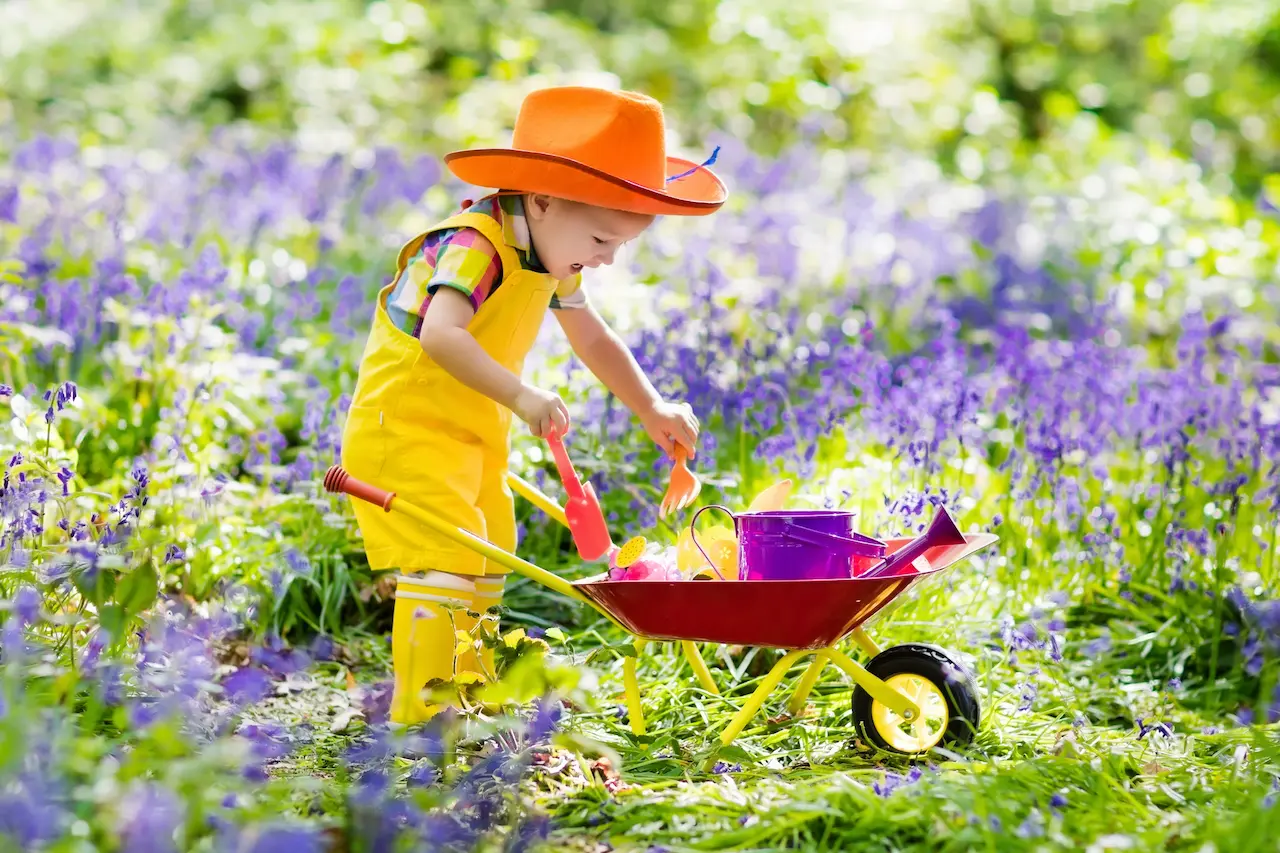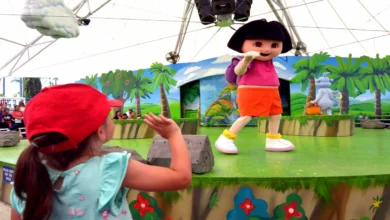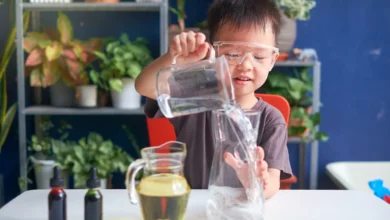Growing Little Green Thumbs
10 Fun Gardening Activities for Toddlers and Preschoolers
You know the garden is magical for children if you have ever seen your toddler with wide-eyed amazement as he or she explores a patch of dirt, or if you have watched a child’s pride when they water the seedling they planted. It’s muddy and mysterious. The garden is alive and fascinating.
It’s not just about planting seeds, but also about teaching patience and creating beautiful moments with nature. This is a great way to get kids outside and away from screens. They will also be engaged in hands-on activities that support their development on all levels: cognitive, social, emotional, and physical.
What’s the best part? It’s not necessary to have a large backyard or expensive tools for your child to enjoy gardening. Even a few pots or planter boxes on a sunny windowsill can be the setting for little green miracles and big discoveries.
Let’s get to it (pun intended)! Explore 10 gardening activities that preschoolers and toddlers will enjoy and benefit from.
1. Growing Speedy Vegetables for Fun and Fast Results
Children thrive on instant (or speedy) gratification. Quick-growing vegetables are ideal for motivating and engaging little gardeners. While fruit trees may take many years to produce fruit, they can be a great alternative.

Choose fast-growing and easy-to-handle plants like:
- Cherry Tomato– A sweet treat to eat and a fun thing to pick.
- Radishes– Ready in only 3-4 weeks.
- Lettuce, spinach– Quick to sprout and satisfying to harvest.
- Peas– Quick growers with attractive tendrils.
- Strawberries– Worth the wait, but a bit slower.
Plant them in raised beds, large containers, or even recycled containers. From seed to plate, involve your child. Let them sprinkle the seeds, water the oil, and pick the fruits. The joy of watching their garden grow can be a confidence booster, and it teaches them responsibility in a fun way.
Parenting tip: Allow them to taste their vegetables straight from the garden. This will encourage them to try new foods.
2. The Watering Job: A Toddler’s Dream Job
Pouring water is something toddlers enjoy just as much as digging. Watering plants is a great gardening task for toddlers.
Purchase a child’s watering can that has a soft nozzle. Show them the plants in need of a drink and let them go around. You might have to wait longer, and your feet may get wet, but it is a great way to develop fine motor skills while learning about plants.
You can even make it a part of your daily routine, such as a “goodnight” visit to the garden before dinner or a “good morning” after breakfast. Be prepared to fill up that watering can about 200 times.
Bonus Idea: Create a “plant-hospital” in which your little horticulturist can “extra-specially care” for plants that are wilting.
3. Create a Magical Fairy Garden
They are miniature worlds full of imagination and whimsy. They encourage storytelling, sensory games, and creativity, all things that toddlers and young children love.
Create your own:
- Choose a large, shallow pot or a small patch of garden.
- Add soil, pebbles, and small plants such as creeping thyme or succulents.
- Decorate using dollhouse furniture, shells, and pinecones.
- Your child can design the layout and name the fairies. They can also make up stories to describe what happens in the magical world.
Over time, fairy gardens can be transformed as new treasures are discovered on walks with the family or in op shops. These are also great projects for rainy days, since many of the elements can be designed and created indoors.
4. For Gardening Inspiration, Visit Farms and Growers’ Markets
You can take your child on a garden-themed trip if you don’t want to allow them to explore gardening. Your child can learn about the food they eat by visiting a local farm or market, such as a berry-picking farm.
Discuss the different fruits, vegetables, colors, smells, and the time it might take for them to grow. Encourage your child to pose questions to a farmer or grower if you happen to meet them. This is a great way to extend gardening into the real world and build understanding.
Bring home seeds or seedlings that you have been inspired by to plant with your family.
5. Grow a Grass Head with Personality
Growing grass heads, also known as sprout heads or Chia Pets, is a great indoor alternative if outdoor gardening is not an option. This classic preschool project involves planting grass in a cup or stocking filled with soil.
The grass head can be decorated with googly eyes, faces, and names. It’s hilarious to watch the “hair” growing and trim it with child-safe scissors. This teaches patience, cause-and-effect, and responsibility.
You’ll need:
- Wheatgrass or grass seeds
- Old socks or stockings
- Potting mix
- Small cup or container
- Face decorations
Place the completed grass head in an open window that gets plenty of sunlight and lightly water it each day. Your child will soon be checking on it each morning.

6. Attract Bees and Birds to Your Garden
Children are drawn to animals. Gardens offer an up-close view of the daily dramas of insects and birds.
Find out at your local nursery which plants will attract pollinators such as bees and butterflies. Local flowering plants tend to be a safe bet. You could even construct a beehive hotel or place a shallow bowl of water for birds.
You can also go on an observation mission with your child:
- How many bees do you see today?
- What color are butterflies?
- What flowers do the insects prefer?
You will not only help your local ecosystem, but also instill a sense of wonder and environmental stewardship into your child.
7. Start a Nature Journal Together
Try turning your time outdoors into a nature study if you want a quieter garden activity. Bring along a sketchbook, colored pencils, and an open mind.
Your child and you can:
- Draw any flowers or leaves that you can find
- Trace shadows using your fingertips
- Press petals into your journal
- Bark rubbings
- Write or dictate observations about insects, birds, and the weather
Even though preschoolers are not able to write yet, they can “journal” with drawings, stickers, or stories. This nature journal will become a treasured keepsake over time. It’s a great way to slow down and tune into the seasons.
8. Dine Alfresco, Even if it’s Just a Fruit Salad
The best way to appreciate your garden is sometimes to taste it.
Bring dinner outside to a table or set up a picnic blanket in the backyard. Better yet, use ingredients from your garden. Lettuce can be used for wraps or salads. Cherry tomatoes are great for salads. Strawberries for dessert.
No home-grown produce? No worries. You can use the meal time to discuss where your food comes from and what you would like to grow next.
You can create a memorable moment by adding fairy lights or citronella candles.
9. Create a “Personal” Patch for Your Child
Children love to feel independent. Giving them the patch of garden (even if that’s just in a pot on the patio) is an excellent way to help them feel competent and involved.
Allow them to choose their plants, within reason, and decorate their patch using homemade signs, painted stones, or marked markers. Create a garden check-in every day to water the plants, weed them, and see their progress.
This “patch” of theirs can be a science lab and a snack source at the same time.
10. Composting Worms – A Great Learning Opportunity
It’s not just about the plants we grow, but also how we feed our soil. Composting can be a great way to teach kids about recycling, waste reduction, and decomposition.
It’s the perfect time to start if your local council offers a rebate for composting or worm farms. The worms love to eat kitchen scraps, and children are fascinated by the transformation of “garbage” into “black-gold” for the garden.
Start small indoors with a bokashi or countertop compost bin.
Composting with children:
- Fruit and veggie scraps
- Eggshells and coffee grounds
- Leaves and garden trimmings
- Newspaper or cardboard (in moderate amounts)
Avoid meat, dairy products, and oily foods.
Discuss what is happening in the compost heap – how it smells, what it contains (hello, vermin! Why it’s important, and what you can do to help. This is science, sustainability, t,y a, nd sensory enjoyment all wrapped up in one squishy squelchy package.

Safety First: Garden Guidelines For Little Ones
Safety is paramount, especially for curious children under five.
Remember:
- Never leave your child unattended in the garden.
- Wear protective clothing, such as hats and sunscreen.
- Use pesticides and chemicals sparingly.
- Avoid potting mixture unless you are wearing gloves aa nd a mask.
- Keep sharp edges away from tools.
- Avoid water, including buckets, ponds, and pools.
Grow More Than Plants
It’s not always easy to predict or neat when you garden with preschoolers and toddlers. You might find them digging up the seeds that you’ve just planted, or trying to “water” your dog. But don’t worry. It’s not about perfection, but connection.
You’re planting more than just seeds when you garden with your children. You are planting resilience, curiosity, an appreciation for nature, and a sense e calmness that comes with being outside together. The experience will be memorable, whether you plant a garden of vegetables or a single dandelion in a small pot.
Grab a trowel and your little sprout, then put on your gumboots. The garden awaits, and so does the pleasure of growing together.



